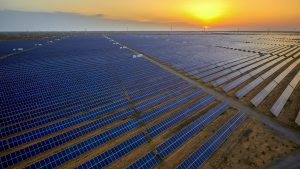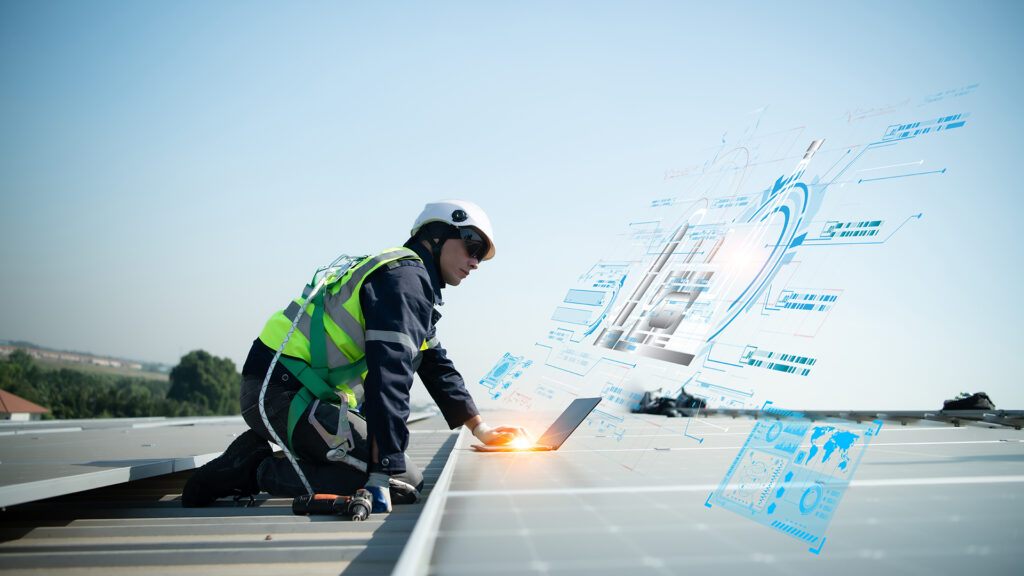The Supernova project aims to improve efficiency and quality in the solar sector to use AI to enhance efficiency, data management and operational maintenance practices across the value chain.
The Supernova project was established to increase quality and efficiency across the solar (PV) sector value chain by breaking down barriers for different stakeholders.
The consortium, made up of 20 diverse partners, covers the entire value chain of PV energy systems, including manufacturers, project developers, independent power plants, operational and maintenance (O&M) providers, and several research facilities.
The purpose of the supernova
Our main idea is to break the silo. This can be summarised in two questions: First, how can my work be positively impacted by changes in previous steps in the value chain? Second, how can you positively affect the next phase of the value chain? This comprehensive objective is supported by seven specific goals outlined in the grant agreement.
The first objective is to enhance the grid friendliness of O&M during the design of the PV plant. For example, when planning and designing a PV plant, we consider not only maximizing yields, but also optimizing them for a variety of O&M procedures. This includes, for example, PV plant layouts for operating unmanned vehicles and optimizing structural designs to increase resilience to harsh weather events. The second objective focuses on utilizing robotic solutions such as aerial vehicles (drones) and field robotics. It aims to reduce costs by leveraging existing technologies, such as maintenance robots already deployed in the field, and equipped with inspection sensors to monitor PV modules and other components for potential failures. The following objectives include improving data collection sensing solutions: We strive for high spatial and temporal granularity in the data we collect. To this end, we are developing smart modules and string-level Internet of Things devices to aid in the monitoring and detection of failures. As a result of these advances, it is expected to generate a significant amount of data. The fourth objective is to consider effective data management. Our strategy includes analyzing data from the O&M process and integrating data from all stakeholders along the value chain. One of the challenges we face is ensuring data consistency, especially between different platforms and sources. Here, AI plays an important role in collaborating and analyzing access to all data and analyses, leading to what is called an “insight explosion.” This increased insight will facilitate improved operational maintenance and increase considerations regarding the end-of-life status of PV components. It aims to improve the profitability of PV systems by rethinking operational maintenance and grid-friendly strategies. For example, we are developing new business models to monetize our data and improve our energy trading practices. Finally, we want to create confidence and business value to share our data. To that end, we are developing models that overcome privacy issues and establishing best practices for data sharing and monetization. A key factor is creating energy data spaces tailored for the PV sector. This space allows for customized sharing according to the data owner’s requirements, and also provides additional applications for data processing.
We use AI to ensure quality
AI can greatly enhance the quality assurance process within the solar sector by enabling it to take advantage of the vast amount of data it generates. This information greatly improves the understanding of PV plants’ operational health, allowing problems to be analyzed in relation to specific variables such as materials and climatic conditions.
However, information from various sources can be confusing, and analysis of this data is often complicated as the amount of data is time-consuming and labor-intensive.
AI offers the opportunity to extract hidden insights from this massive amount of data. Instead of analyzing different data segments individually, AI can help you effectively blend data from different sources and provide entirely new insights.
It is important to distinguish between two AI concepts: Identification AI and Generation AI. Although identification AI has been used in PV research for many years, generation AI based on large-scale language models such as GPT has gained great popularity in recent years and is currently widely applied.
Both approaches are essential to achieving this explosion of insight, but it is important to identify the role each approach should play. For example, a well-trained identification approach (traditional machine learning methods) can perform simple defect detection tasks more accurately and efficiently. Generated AI, on the other hand, is suitable for organizing data from various sources, determining the best tool for specific data analysis, and establishing connections between the retrieved information.
Supernova actively integrates both AI approaches. One example of this integration is the development of AI agents based on generated AI. This utilizes traditional models trained with data to obtain and explain in detail the relevant information. These agents can be applied to specific workflows such as O&M.
SolarPower Europe: foster collaboration and knowledge sharing
SolarPower Europe plays an important role in the Supernova project. Using our expertise, SolarPower Europe is responsible for communicating and disseminating information about the work of a supernova. As a business member organization, SolarPower Europe unites hundreds of stakeholders across the value chain, maintains direct communication with policymakers, and has unique knowledge of existing and upcoming policies and regulations.
One of the key tasks for an organization is to define cybersecurity guidelines and assess the impact of decision-making along the value chain. Engagement with a variety of stakeholders is invaluable and encourages connections not only within the consortium but also with other partners.

Additionally, SolarPower Europe organizes key initiatives that are firmly integrated into the project. One such initiative is the Solar Quality Summit, which serves as a central meeting point for stakeholders. The summit will gain insights from a variety of partners, fake new collaborations, and spread the results and development from Supernova.
In February of this year, Supernova was responsible for several presentations at the Solar Quality Summit. This includes two panels focusing solely on projects. He is also involved in SolarPower Europe’s Lifecycle Quality Workstream Meeting, allowing him to share his Supernova development with non-consortium partners.
Collaboration = Success
Cooperation between stakeholders in the SuperNova project is crucial to the overall success of the solar initiative. Typically, Horizon Europe projects include collaboration, working with multiple partners towards a common goal. These large projects can only be successful through strong collaboration between all involved partners. Supernova has partners across the value chain. This will allow a variety of stakeholders to participate in the project. Each partner offers unique expertise and this diversity can lead to different levels of understanding regarding what constitutes cutting-edge practices.
While it may be general knowledge to be considered best practices for some partners, it may not be so clear to others. Therefore, open communication is essential. engaging in detailed discussions on a variety of topics, sharing what you need, identifying restrictions, and more. It is important to note that collaboration is extremely important, but it is not always easy. The goal of the project is to break down barriers between stakeholders, improve communication and benefit everyone, and we are beginning to achieve that with the supernova. With Supernova, we aim to demonstrate the value of this collaborative approach. This approach will be adopted throughout the solar PV industry, where implementations will become even more complicated and ambitious.
From reactive to proactive
It is essential to translate quality assurance from the reactive process to a framework that is only addressed after problems arise and is proactive and potentially predictive. An ideal scenario is one where you can utilize enough data to predict potential problems and plan accordingly. This shift relies on real-time data, along with autonomous testing and data analysis.
To achieve this, deep learning and AI must be adopted to analyse the data and derive meaningful insights. AI promotes timely autonomous inspections and helps in teaching and planning these inspections using robotic systems. Additionally, AI needs to quickly adapt and learn to new data, allowing our personnel to have streamlined processes that do not require large system changes or long training.
The benefits of AI in this context are particularly important when compared to manual processes. AI can process information more quickly and respond in real time, bringing economic benefits that cannot be done by human labor alone. One of the key roles of supernovae is to coordinate the flow of data between different stakeholders and platforms. The ability of AI to understand relationships between different data sources – even when labels are inconsistent – is important. Analyzing this data allows you to generate data-driven recommendations, such as developing decision-making systems primarily led by AI, and actively ordering components that are likely to fail immediately.
The generated insights are beneficial to the PV sector as a whole by creating business value across the energy sector by improving forecasting and thus energy trading practices.
It is also essential that the AI tools we create remain reliable and explainable, especially as we assume more decision-making power. Therefore, we adhere to AI ethical guidelines and ensure that decisions made by AI systems are transparent and understandable to humans. This principle of having a “human in a loop” ensures that AI does not operate with full autonomy. Rather, humans examine important decisions.
The supernova is at the forefront of this vision. We are actively pursuing many of these areas, some already at a sophisticated stage in product development. For others, we are laying the foundations by testing different approaches and establishing frameworks and basic rules for AI applications. Our goal is to ensure that our innovations are effectively implemented in the PV industry and simply do not exist as research projects.
To conclude the first year of the project, it is about two and a half years ahead, with some important progress expected in the meantime. To follow your journey and stay up to date with the latest news, visit the SuperNova website.
This article will also be featured in the 22nd edition of Quarterly Publication.
Source link

